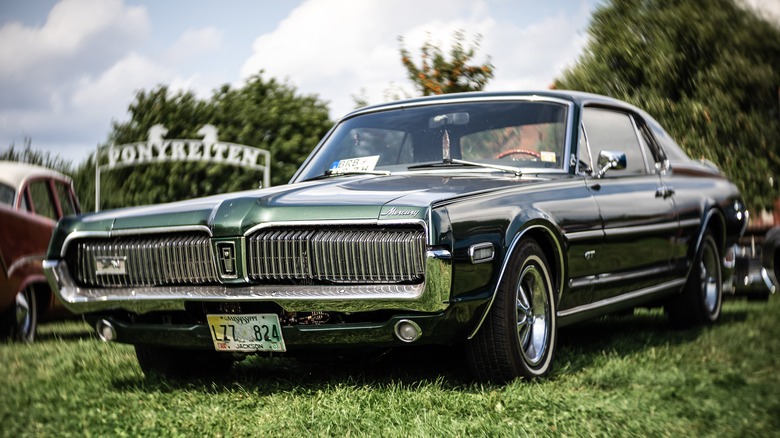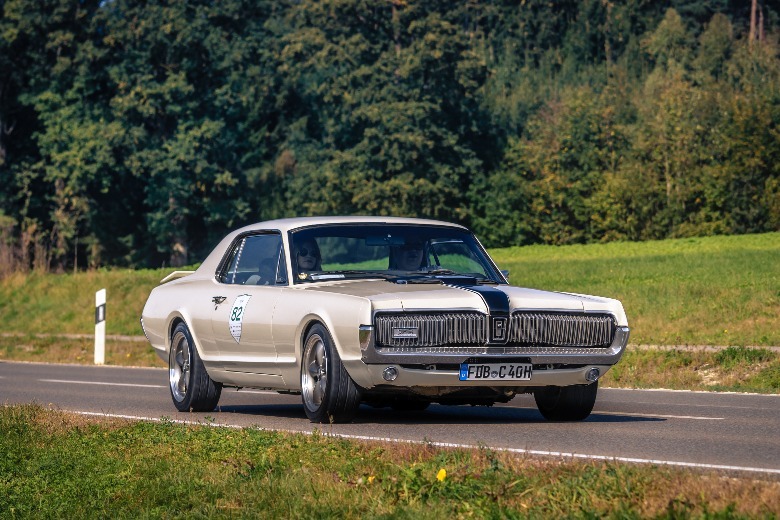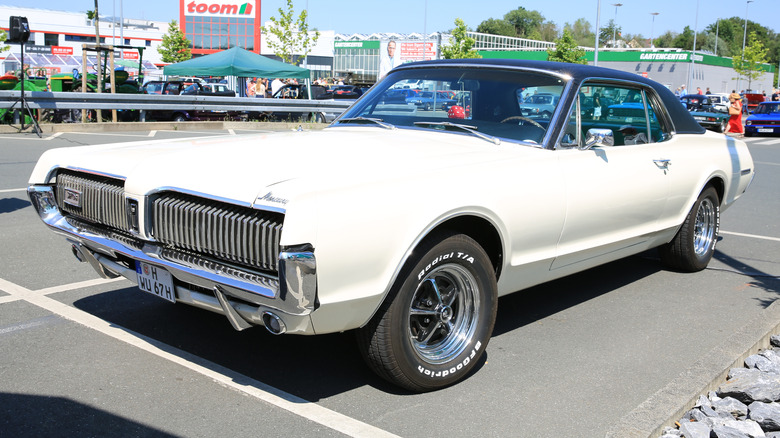How Mercury's Cougar Rode The Mustang Wave And Outperformed Expectations
Since its founding in 1938 by Edsel Ford, the Mercury division has always consisted of rebadged versions of Ford cars, the mid-tier choice between Ford and the brand's Lincoln luxury vehicles. Ford closed the doors on its Mercury subsidiary in 2010, but muscle car fans remain in awe of the Mercury Cougar unveiled in 1967. The Cougar nameplate spanned eight generations until 2002, but the most unforgettable is the first to second-gen variants based on the iconic Ford Mustang.
The funny thing is Ford originally suggested the "Cougar" name for the Mustang, and the Cougar T-7 project started a few years before the Mustang's smashing debut in 1964. Ford sold 22,000 Mustangs during the first on-sale date and made 263,434 deliveries by the end of 1964, and the numbers motivated the automaker to come up with a more refined and stylish Mustang.
By 1966, the Mercury Cougar was in dealerships as a more "mature" and luxurious rendition of the Mustang, and buyers flocked in droves. Mercury executives were pining for 85,000 units sold in the Cougar's maiden year, but the company sold more than 150,000 Cougars when all was said and done.
Mercury Cougar: A Mustang clone but better?
The Mercury Cougar was not merely a Mustang with fancy hideaway headlights, sequential rear turn signal lights (sound familiar?), and a more upscale interior. It was longer and had a three-inch stretched wheelbase, freeing up more legroom for rear seat occupants. And even with the standard 195-horsepower 289 cubic inch Windsor V8, the Cougar could scoot like a genuine muscle car, especially when fitted with the larger 4.9-liter (302 cubic inches) or 7.0-liter (482 cubic inches) V8.
Meanwhile, the first-gen Cougar's XR-7 package adds a wood steering wheel, black-face competition gauges, a faux walnut dashboard, aircraft-style toggle switches, and vinyl/cowhide upholstery. On the other hand, the GT package includes suspension updates with stiffer springs, a sturdier anti-roll bar, bespoke wide-oval tires, and a low-restriction exhaust system.
The cream of the crop was the Cougar GT, available from 1967 to 1968. It came with a 6.4-liter (390 cubic inches) V8 with hydraulic lifters and street-tuned camshafts to produce 335 horsepower, enough to propel the car from zero to 60 mph in 8.1 seconds and conquer the quarter mile in about 16 seconds. The Cougar lost its pony car identity when the third generation model arrived in 1974, and the Cougar nameplate became renditions of the Ford LTD II, Lincoln Continental, and Ford Mondeo in the succeeding generations, a far cry from its muscle car roots.


